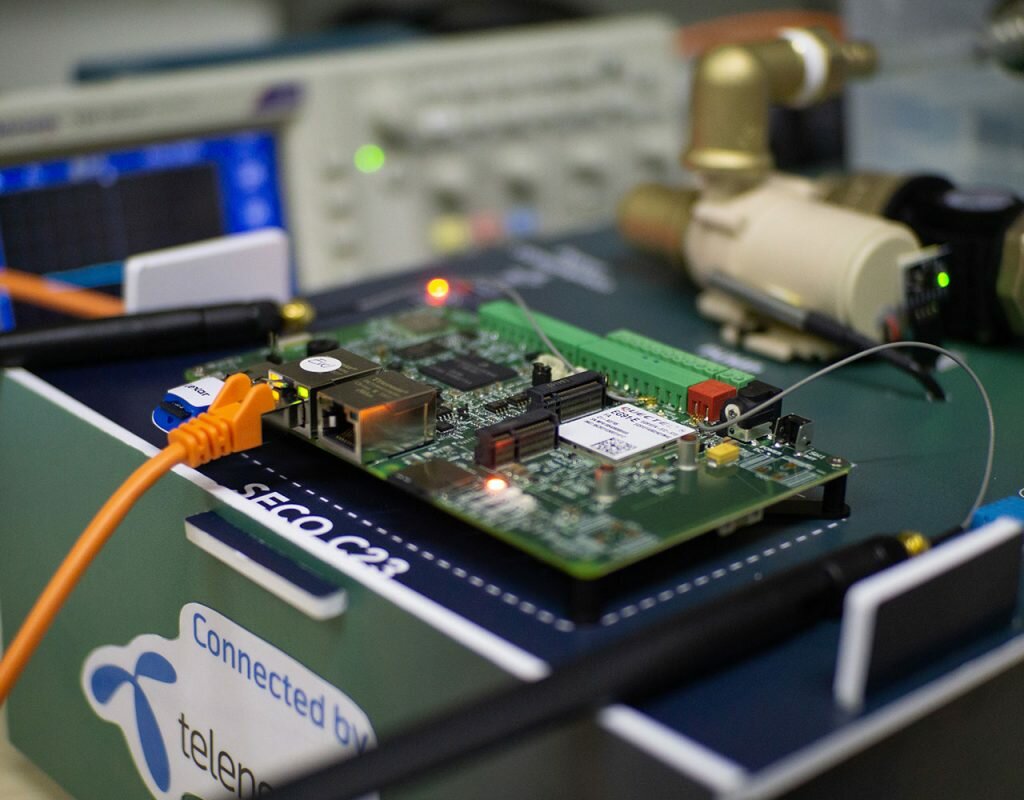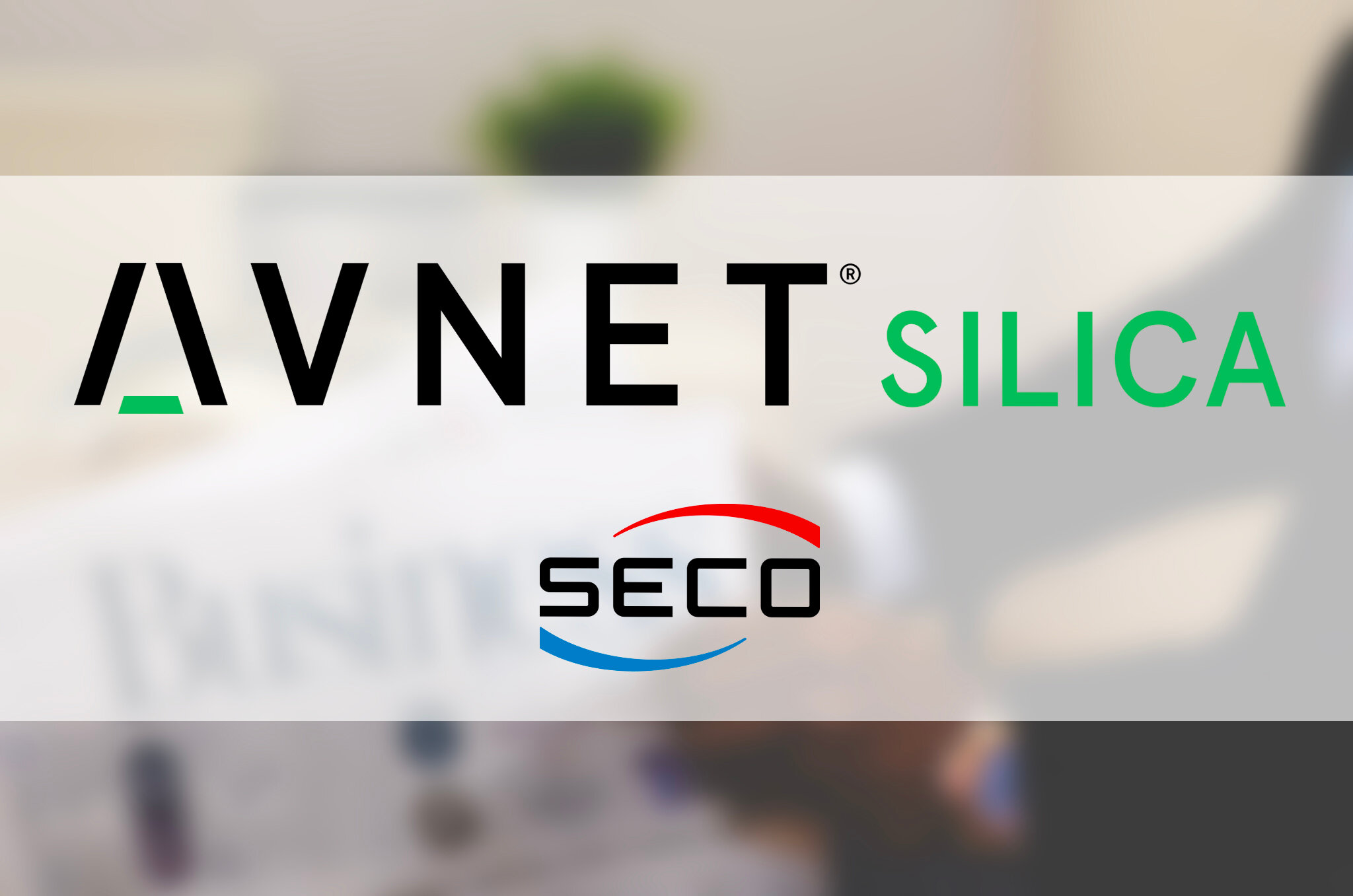From February 25 to February 27, the ‘Embedded World Exhibition & Conference,’ the leading international fair for embedded systems, is coming to the Nuremberg Exhibition Centre, Germany.
SECO (Hall 1.330), an established company in the field of embedded electronics, has put everything in place for showcasing the latest additions to its product range to the tens of thousands of expected visitors.
In addition to its wide range of products and services in exposition, SECO is also going to present EDGEHOG, i.e., SECO’s IIoT-as-a-service platform that leverages SECO’s multidisciplinary expertise in electronics, embedded software, and system integration.
EDGEHOG: a One-Stop IoT solution for the industrial domain
Edgehog is an IIoT-as-a-service platform designed for industrial customers, i.e., a complete set of tools for digitizing the industrial infrastructure by enabling embedded Linux devices with remote management services and IIoT services. By subscribing, the customer gets access to cutting-edge electronics, secure OS, Docker-compatible embedded software, Device Manager, and connectivity in the form of modular value-added services. SECO takes care of the design, production, certification, and integration of an all-encompassing IoT solution tailor-made for the customer’s product, and closely follows the customer along their road to IoT, from A to Z. Thanks to Edgehog, customers can focus on their core business with no need to take care of anything else.
Among the many services offered by EDGEHOG, are: HW integration and customization, OTA updates, geolocalization, cloud connectivity, container runtime, remote control, telemetry agent, predictive maintenance and machine learning on the edge, security, cloud APIs, and, last but not least, a dedicated IoT OS, i.e., EDGEHOG OS, which is regularly maintained by SECO.
EDGEHOG OS & Micro EDGEHOG OS
EDGEHOG OS is a lightweight Docker-compatible operating system based on Yocto Linux for Arm and x86 SBCs, and optimized for embedded and IIoT applications, specifically for SECO IoT Gateways. It features integrated Docker Engine, Double partition, and Fallback. Fallback is a return to the previous level of the system to prevent problems during the update. It also includes system and network configuration tools.
EDGEHOG OS is continuously supported via security patches and stability updates. It grants long-term support without any risk of getting discontinued. The security of EDGEHOG OS is taken care of by SECO via incremental OTA updates. In other words, EDGEHOG OS is updated remotely by SECO through modular updates. In addition to EDGEHOG OS, there’s also Micro EDGEHOG OS - a FreeRTOS-based operating system for Cortex-M microcontrollers and as ESP32 microcontrollers such as the upcoming SENSE-D01 by SECO.
EDGEHOG Containers Manager
A container is a standard unit of software that packages up code and all its dependencies, so the application runs quickly and reliably from one computing environment to another. Docker is the most popular set of containers. Linux containers, particularly Docker, offer, for the first time, a practical path to using virtualization on embedded devices, without heavy overhead or hardware abstraction layers that get in the way.
EDGEHOG Container Manager makes extensive use of Docker-compatible containers so to deploy software applications on an entire fleet of diverse electronics seamlessly and efficiently. Containers work independently from EDGEHOG OS and can be configured to run as privileged, access hardware directly, and inject modules into the kernel.
Applications built with EDGEHOG Containers Manager are much easier, faster, and safer to deploy.
EDGEHOG DEVICE MANAGER
EDGEHOG Device Manager is a web service for remote device management. As the backend for managing updates and devices’ status, it allows users to view and control all the EDGEHOG-enabled single-board computers and computer-on-modules as well as deploy software remotely via OS over-the-air (OTA) updates. When a connected piece of hardware is not working properly, the Device Manager shows a visual alert so that the IT manager in charge can take action accordingly. It is designed as a proactive response center for the electronics on the edge as well as a programmable virtual cockpit for the entire fleet of connected devices.
EDGEHOG Device Manager is an all-in-one enabler of several IIoT functionalities, such as managing OS over-the-air (OTA) updates to the devices, managing users, devices’ networks, Docker Container Applications, downloading the logs, securely connecting via SSL tunnel with the devices, checking the status of the devices (online/offline, CPU, RAM, and more), requesting the location of the device. EDGEHOG Device Management APIs give the possibility to integrate the EDGEHOG Device Management on third-party applications, such as the customer’s applications. The main features accessible from the Web Control Panel are available through Public APIs such as Models creation, Devices creation, OTA update campaigns, and much more.
Connectivity
EDGEHOG’s connectivity and telemetry are granted by a partnership with Telenor Connexion, which provides a secure, global IoT connectivity solution using cellular technology for remote device management. It features a 2G/3G/LTE/NB-IoT/LTE-M/5G fully secure, scalable network, also providing a connectivity solution as a service and access to over 400 global mobile networks. Telenor is also closing deals with local operators expanding their network to services such as NB-IoT and LTE-M.
EDGEHOG demos at the Embedded World 2020
SECO is going to display three demos of EDGEHOG at the Embedded World 2020.
1. EDGEHOG OS OTA Update
This first demo shows how to perform the OS over-the-air (OTA) update of the Edgehog OS in 6 different SBC-C23 boards (Smart Edge Compute Units based on NXP i.MX 6SoloX Processor) through the EDGEHOG Device Manager. The update campaign process can be easily managed and controlled via the Device Management Web interface on the screen. All the SBC-C23 boards are available locally, but the Update can also be done on any other boards registered inside the Device Manager.
2. Deploy & Container
The second demo is an example of how the Docker system works on the EDGEHOG IoT solution. Thanks to this combination, any complex application can be easily developed and deployed into all the Arm devices. The Arm boards used are: 1x SBC-C23 (SBC based on NXP i.MX 6SoloX Processor), 1x SBC-C61 (SBC based on NXP i.MX 8M Mini Processors) and 1x UDOO NEO (open-source hardware SBC with NXP i.MX 6SoloX Processor).
3. EDGEHOG-enabled coffee machine
The fourth and final demo consists of an EDGEHOG-enabled coffee machine. The machine is powered by SENSE-D01, a low-cost, low-power, wireless microcontroller. A nearby tablet connected to the coffee machine shows a custom interface containing: how many coffees have been made and further telemetry data. Also, the tablet acts as a lightweight Device Manager, as it can upgrade the coffee machine’s firmware remotely and, consequently, make it show additional telemetry data on the tablet.
 zh
zh 
































































